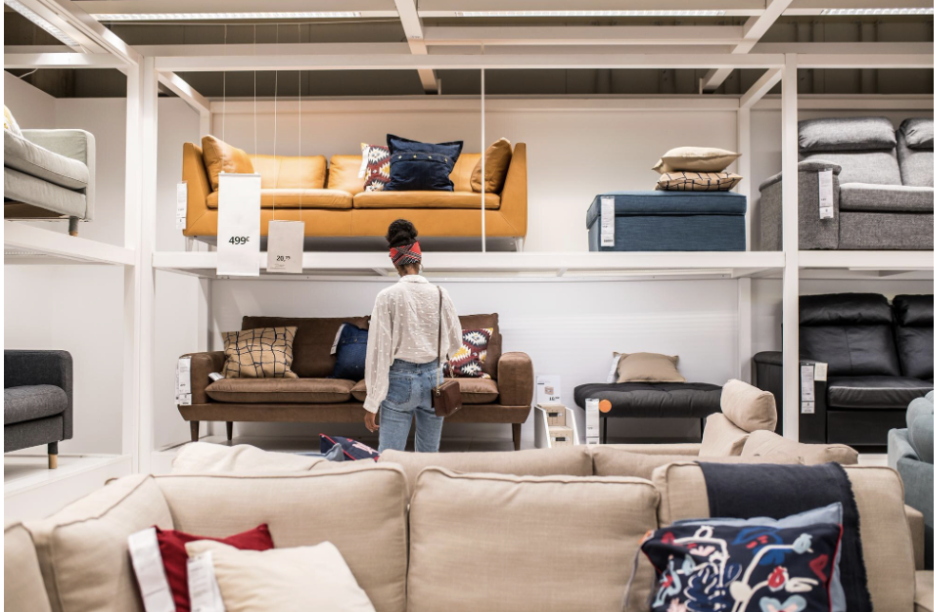_11zon.jpg)
_11zon.jpg)
Nobody really thinks about a warranty when one's buying furniture. Right?
It’s always about how the furniture will look near the window, whether the fabric feels right, if it matches the furniture inspo pinterest board you built at 2 a.m.
But then again, right at checkout you get asked: “Would you like to add a warranty to your purchase?”
It’s not a question for which you are ready. Most people choose to skip, because it feels unnecessary in the moment.
Likely 13 months later something breaks, or your cat spills wine on the couch, or there’s that one dent that somehow steals your peace every time you walk by.

And you wonder- should I have really bought it back then? But then again your brain thinks- come on, the cost wasn't really justified.
Still somewhere near your lungs (hint- an organ that pumps blood)- there's confusion. Because it's only at these bad moments that the reality hits harder than the price tag. Americans spend over $23 billion a year fixing or replacing furniture they thought would last longer.
And here is what makes the numbers even crazier: In 2024, the U.S furniture market was valued at around USD 189.8 billion.
I mean, that $23 billion isn’t just a rounding error, it’s over 12% of the anunual furniture sales.
So, maybe it’s time to understand warranties a little differently.
Because whether you’re the one buying furniture or selling it, warranties now play a much bigger role in how trust is built, retained, and protected.
Every piece of furniture, from the frame to the fabric, starts with one basic promise: the manufacturer’s warranty.
It’s the brand’s way of saying,-
“Hey, we built this right. If something was wrong from the start, we’ll take ownership and fix it.”
Simple enough, right? But, that promise has its limits. And understanding those limits early on saves you a lot of frustration later.

It’s pretty straightforward though- it covers how your furniture was made, not what happens to it later.
Things like:
What it doesn’t cover?
The stuff that happens because of life. Spills, fading, pet scratches, or that one mysterious dent that wasn’t there yesterday.
Well, a sofa frame might last a decade, but a cushion cover? Maybe like two years, max- if some customer (no- not you, but someone else) uses it roughly.
Thus brands split coverage by component: 10 years on the frame, 3 on foam, 1 on fabric; they’re just managing what’s most likely to wear out first.
Additionally, different manufacturers know how sturdy their own product is 😊. Something like-
Once the manufacturer warranty runs out, you’re basically on your own. That’s where the extended warranty steps in, the part that saves you when time does its thing.
The frame that cracks after a few years? Covered.
The hinge that decides it’s had enough? Also covered.
Not because you misused it, but because, well, things age. As W.H. Auden put it-
“But all the clocks in the city
Began to whirr and chime:
‘O let not Time deceive you,
You cannot conquer Time.”
Though, there’s more than just time for which these warranties are helpful. Most extended warranty plans include:
For shoppers, it’s simple, when something breaks, you don’t have to stress or panic. You already know that your issue can be covered and fixed, in just a matter of time.
And for merchants, furniture may look high-margin on paper, but shipping, returns, and servicing eat most of it away. Extended coverage doesn’t change that math but it does create some additional profit, while reducing the risk of angry reviews and angrier customers when time indeed does have its fancy.
The stats are clear, 70% of shoppers trust products more when they include extended coverage, and retailers see up to 16.5% higher retention because of it.
For example,
A midwestern furniture retailer experienced it firsthand: most negative reviews weren’t about product quality but what happened after delivery. Once they added SureBright’s extended warranty and shipping protection, results turned around fast:

You can be as careful as you want, but life still happens.
A coffee spill on the new couch, a cat deciding the armrest is a scratching post, and you imagine the worst.
That’s what accidental damage protection is for the real-world stuff that happens after delivery, not the kind you can blame on “defects”.
What accidental damage protection includes-
The usual suspects:
So no, this isn’t some fancy add-on, it’s the kind of backup you only realize you needed after the accident.
You know that moment when you’re waiting all week for a delivery and it finally shows up… dented?
Yeah. That.
That’s why shipping protection exists. It covers what happens between the warehouse and your doorstep. The part no one really thinks about until something shows up broken.
Or worse!!! Someone steals it right off your porch! Yup, the audacity.
And honestly, it’s way more common than you’d think, 1 in 3 Americans has dealt with package theft at least once.
Everything that can go wrong between the warehouse and your doorstep, long before you even touch the product.

One bad delivery can undo months of trust. 3 out of 5 shoppers now blame the merchant for failed deliveries. Ouch.
Also, for merchants who haven't paid attention yet- 40% of shoppers drop a retailer after a single bad experience.

For example, a furniture brand selling custom dining sets noticed their 4.3 rating slipping.
After reading the reviews, they found the real culprit: 32% mentioned shipping damage, 7% delayed deliveries, and 2.7% lost orders.
When they added shipping protection, things turned around fast:
Less chaos. More happy customers.
Let's take a look.
Even a few small mistakes, missing a step, unclear photos, or incomplete proof, and things can go wrong pretty fast . Here’s how to do it the right way-
Step 1: Check your product eligibility
Step 2: Document the issue
Step 3: Collect proof
Step 4: File the claim
Step 5: Describe clearly
Step 6: Wait for verification
Step 7: Resolution
Step 8: Save everything
Whether you’re the one buying furniture or the one selling it, a good warranty partner makes life easier for both.
For shoppers, it’s about trust, knowing someone’s got your back when things go wrong.
For merchants, it’s about efficiency, reputation, and keeping customers happy without burning support hours.
The best warranty partners check all those boxes: fast claims, transparent communication, and experiences that actually earn good reviews instead of complaints.
When you’re choosing one, look for:
SureBright consistently ranks high across all of these, helping merchants turn post-purchase protection into a true retention engine while giving customers the most satisfying experience and the best return on their purchase.
We have helped 500+ merchants turn protection into retention and more. Contact us to see how it can work for you.